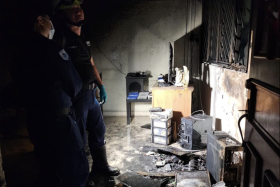Creating places where people want to be
Basis of urban regeneration should be social and environmental considerations
The United Nations projected that by 2050, the number of city dwellers will swell to 70 per cent of the global population.
As cities come under increasing pressure from the influx of people - coupled with rising population growth and demographic changes - the demands of trying to house and transport residents and supply them with essential services is stretching resources.
Urbanisation has certainly escalated problems, such as housing shortages, inequality, unemployment, crime and climate change.
Adding to the challenges are the governments' aspirations to transform their cities into smart and liveable places.
This common thread gave rise to a growing global trend of urban regeneration.
At its core, urban regeneration puts communities at the centre of decision making when it comes to placemaking.
The ultimate goal is to create an authentic place that meets the needs and aspirations of the community.
The benefits of urban regeneration are well known.
When done well, it revitalises run-down areas and creates vibrant spaces that people want to live and work in.
For Singapore, being a place where people want to be is crucial to the nation's ambition to be a smart and green city that continues to attract talent.
The ultimate goal is to create an authentic place that meets the needs and aspirations of the community.
Thus, the vision and implementation of urban regeneration should promote sustainable communities as places that people like living in, and want to stay in, because their neighbourhoods have real character and a sense of place.
It requires a mix of supportive government policies, well-planned infrastructure and place mapping, but there also needs to be a dynamic energy, which can come from the local community with its inherent culture and history, proprietors with fresh retail and dining options as well as green spaces.
These elements can offer lasting economic, social, cultural and environmental benefits.
Above all, it shows that meeting the demands of housing growth and renewal is not just about units of housing - it is about transforming neighbourhoods.
The key ingredient to this model is ensuring that the built environment is fit for the future.
In other words, social and environmental considerations should form the basis of urban renewal plans and help public authorities deliver lasting outcomes.
BENEFITS
Bringing together the private and public sectors should create broad economic and social benefits for the whole community, such as affordable housing, training opportunities and sustained employment.
Using an integrated delivery model with global experience, a developer needs to partner cities, governments and communities to create the best shops, workplaces, apartments and public areas as well as deliver spaces that are functional and enjoyable.
It needs to foster genuine connection between the people and the place too.
Urban regeneration helps deliver better city workspaces where we can do our best thinking and collaboration, while attracting the best diverse talent.
The best places people want to be are where people work to make a life, not just a living.
But how do people and places work well together? How can cities work for residents?
A good example is the success of urban renewal at the Marina Bay area, an icon of Singapore's ambitions as a global city.
The area, built on reclaimed land, placed Singapore on the world map for international investors and tourists alike.
World-class companies took up office space, attracting a diverse talent pool, while fresh retail and housing options fuelled the vibrancy of the area.
Another example, just 10 minutes from the Central Business District by car or train, is Paya Lebar Quarter, a key catalyst to the URA masterplan to regenerate Paya Lebar.
This massive regeneration project is expected to transform the area into a bustling, pedestrian-friendly and new city precinct while maintaining the Malay heritage and culture unique to the area.
Meanwhile, the green public space allows the community to engage in a diverse range of activities.
In line with Singapore's vision to be a car-lite city, a cycling path around and within the precinct will be built to connect to the wider Park Connector Network.
Singapore is no stranger to urban renewal, and its success with the rejuvenation of the Marina Bay area and the clean-up of the Singapore River showed that effective governance and integrated long-term planning are required to strike a balance between economic, social and environmental goals.
As with any regeneration project, the overall vision needs to be sound.
An approach that takes a 360-degree view from public and private sectors can certainly make the difference between a good place to live and a great one.
The writer is the Asia chief executive officer at Lendlease, based in Singapore. This article was published in The Business Times yesterday.
Get The New Paper on your phone with the free TNP app. Download from the Apple App Store or Google Play Store now

